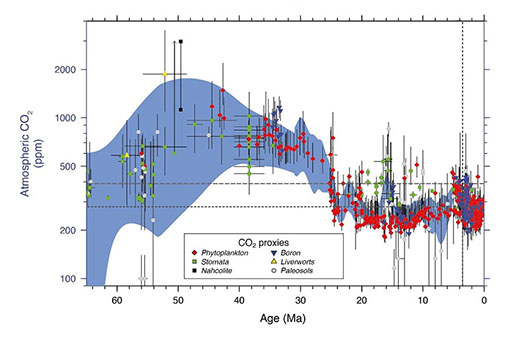4.8 Geoengineering: crazy ideas or will they save the planet?
Geoengineering is large-scale, deliberate intervention in the Earth’s climate. Later in this section, you will hear from Dr Neil Edwards about increasing the size of the plug hole in the atmospheric bath tub.
We need to talk about carbon dioxide
The oil that drives much of our modern society has an unfortunate side effect, and that’s climate change. The CO2 released from burning all that oil and gas that we’ve found, extracted and processed (along with burning coal, other industrial processes, and land use changes) is changing the climate of the planet, and we need to take action.
Studying the geological past has shown us that the climate has changed naturally in the past, with much warmer periods of Earth’s history associated with (naturally) higher CO2, and colder times, like our most recent ice ages, associated with much lower levels of atmospheric CO2. Understanding what has caused those natural variations in CO2 has given us some ideas about how we might be able to reduce the CO2 in the atmosphere in the future.
Figure 4.10 shows reconstructions of CO2 over the last 65 million years of Earth history. The different symbols are for different methods of reconstructing CO2. We know from other methods that the interval of time before 30 million years ago was much warmer than today.
One of the main principles of geology is that the present is the key to the past – that by understanding processes happening today on earth, we can understand what the geological record is telling us. Looking into the future, we can turn that on its head and see that the past might be the key to the future.

